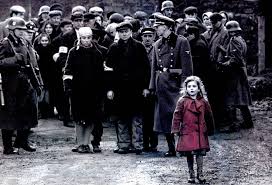Chariots of fires follows two driven individuals who are compelled to success yet are motivated by entirely different reasons. Motivation explains how certain behaviour are started, directed and continued to meet the needs of the individual. We can see that these men’s needs exceed expectations as they strive to accomplish a near impossible goal.
Taking a look at first at Harold Abrahams, we can see that his driving force is succeeding in the face of adversity. Under Jewish decent, Abrahams was put under a lot of hardships as he had to work twice as hard to prove that he was indeed a representative of England and what it has to offer. Although the scrutiny Abrahams suffered from was subtle it was constantly present but it only leads to him performing even better to prove that he is not just an English man but one to be admired. After losing for the first time we can see that Abrahams starts to develop an external locus of control as he contemplates quitting due to the belief that he has done everything in his power yet is still not good enough. Until he is able to see that more work and drive was required to justify his arrogant attitude.
Eric Liddell on the other hand is devout to his religion and has the belief that god made him fast therefore he should use his talent. We can see that there is a lot more to this than religion as winning feels good to everyone but when confronted with this issue of testing his faith with his individual desires we can see that he keeps a firm stance towards his religion. Even after winning he doesn’t stop to cherish his achievement with the whole world but continues his work as a missionary in China. We can see that his overall motivation lies with the words of god as opposed to fulfilling his own desires.
Both individual are intrinsically motivated as they are not driven for any external rewards but to fulfil their inner needs for achievement whether it is running and/or religion. We can see that the expectancy-value theory most applies here as the strong beliefs and values of both individuals exceed that of most others and fulfilling their needs.

